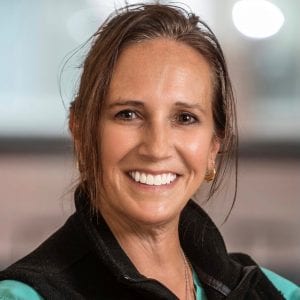With Massachusetts School Building Authority (MSBA) approved projects on the horizon in both Westfield and Southwick, residents are asking questions about the MSBA and the process that goes into renovating or building a new school.
The MSBA was created in 2004, replacing the previous program run through the Massachusetts Department of Education. It is a quasi-independent government authority created to reform the process of funding capital improvement projects in the Commonwealth’s public schools. The authority is overseen by Board Chairman and State Treasurer Steve Grossman.
The former version of the MSBA was disbanded. Its process included approving many projects and putting districts on a waiting list for funding. When the money ran out, the schools on the waiting list were out of luck.
Southwick-Tolland-Granville Regional Schools Superintendent Dr. John Barry said the current MSBA process is lengthy and stringent, but it is fair.
“There is a very strict approval process with different priorities than when it was run by the DOE,” said Barry. “With the old program, almost everyone was granted approval and as money became available, your project was started.”
Today, the MSBA approves projects it can afford to reimburse and does not put approved districts on a waiting list.
“They identify projects they are going to fund and have a budget,” said Barry.
The MSBA has a dedicated revenue stream of one penny of the state’s 6.25-percent sales tax. In its seven-year history, the MSBA has made more than $8.8 billion in reimbursements to cities, towns, and regional school districts for school construction projects.
Instead of waiting years for reimbursement, districts now receive payments from the MSBA as costs are incurred, usually within 15 days of submitting a request through the MSBA’s online Pro-Pay System. These timely payments have saved municipalities over $2.9 billion in avoided local interest costs and have provided much needed cash flow to communities in difficult economic times.
The approval process can take years. A district must submit a detailed statement of interest. If the project is deemed worthy, it is placed on a short list. If approved, cities and towns have the option of moving forward if it can afford to fund its portion of the cost without taking a citizen vote, or it can put the question to residents.
In Westfield, the City Council voted, with support of Mayor Daniel M. Knapik, to move ahead with its elementary school project. The process was a bit more complicated in Southwick.
For starters, the district originally submitted an SOI for Woodland Elementary School. When the state declared a moratorium on all projects in 2004 in order to reorganize and form the MSBA, Southwick was put on hold. When the MSBA began looking at projects again, Southwick eventually made the short list.
“In 2008 and 2009, it was slow for us,” said Barry. “In 2010 was when we started meeting regularly with the MSBA.”
Then, the MSBA did something unprecedented, it offered the Southwick-Tolland Regional district an opportunity to renovate its elementary, middle and high school, if it included Granville in its district.
All three towns in the district had to approve the new regionalization. Then, all three towns had to approve a proposition 2.5 debt exclusion in three separate town meetings. Next, all three towns had to approve a ballot question for the debt exclusion. Tolland and Granville overwhelmingly approved it, while Southwick voted it down. Several months later, a slightly revised project, with a cost to taxpayers of about half of the original plan, was approved by Southwick voters.
Barry said the process, once approved by voters or a city council, is outlined by the MSBA, and begins with the selection of an owner’s project manager.
“This is great because you need that expertise,” Barry said.
Selection of architects and construction manager at risk is also part of the process, as is a feasibility study and schematic designs. Once a project is approved, the detail work begins before any shovels hit the ground.
Southwick and Westfield are both in this phase of the project.
Westfield’s project has not been without controversy, with a small group of residents speaking out against the size of the 600-student school to be located on Cross and Ashley streets. A few city councilors have also spoke against the project, including Ward 4 Councilor Mary O’Connell.
O’Connell questioned the membership of the school building committee, which includes several non-residents. She also said she had to “fight tooth and nail” for the ward councilor for the site of the school had to become a member of the committee.
Not true, said Knapik.
“No one had to fight “tooth and nail” to get a seat on this committee for Mr. Brown. He was welcomed with open arms as the sitting ward two city councilor,” Knapik wrote to O’Connell. He also sent her the list of committee members, as outlined by the MSBA. Documents to this effect can be found here.
According to its own website, the MSBA has accomplished the following:
- Completed final audits of 777 of the 789 Former Program projects totaling over $14.7 billion in submitted costs
- Achieved audit savings of over $1.4 billion
- Audited over $730 million in costs for the 12 remaining Waiting List projects currently submitting monthly requests for reimbursement
- Completed final audits for 70 projects totaling over $255 million in submitted costs
- Audited over $1.5 billion in costs for the 214 projects currently submitting monthly requests for reimbursement
- Made more than 800 site visits to more than 200 school districts as part of the MSBA’s review and due diligence process
- Launched the Green Repair Program for the repair and replacement of roofs, windows, and boilers
- Received over 180 Statements of Interest from communities interested in participating in the program
- Developed data based enrollment projection methodology in order to build right-sized schools
- Saved more than $162 million by developing a process that has increased oversight of school improvement projects and developed partnerships with districts to establish a reasonable project budget and to prohibit growth in scope or budget
- Saved approximately $230 million by focusing on core academic spaces
- Created the Model School Program to effectively adapt and re-use the design of successful, recently constructed elementary, middle and high schools
Other communities across western Massachusetts are in various stages of completing MSBA approved and funded projects, including Longmeadow, Agawam, Wilbraham and Easthampton.







